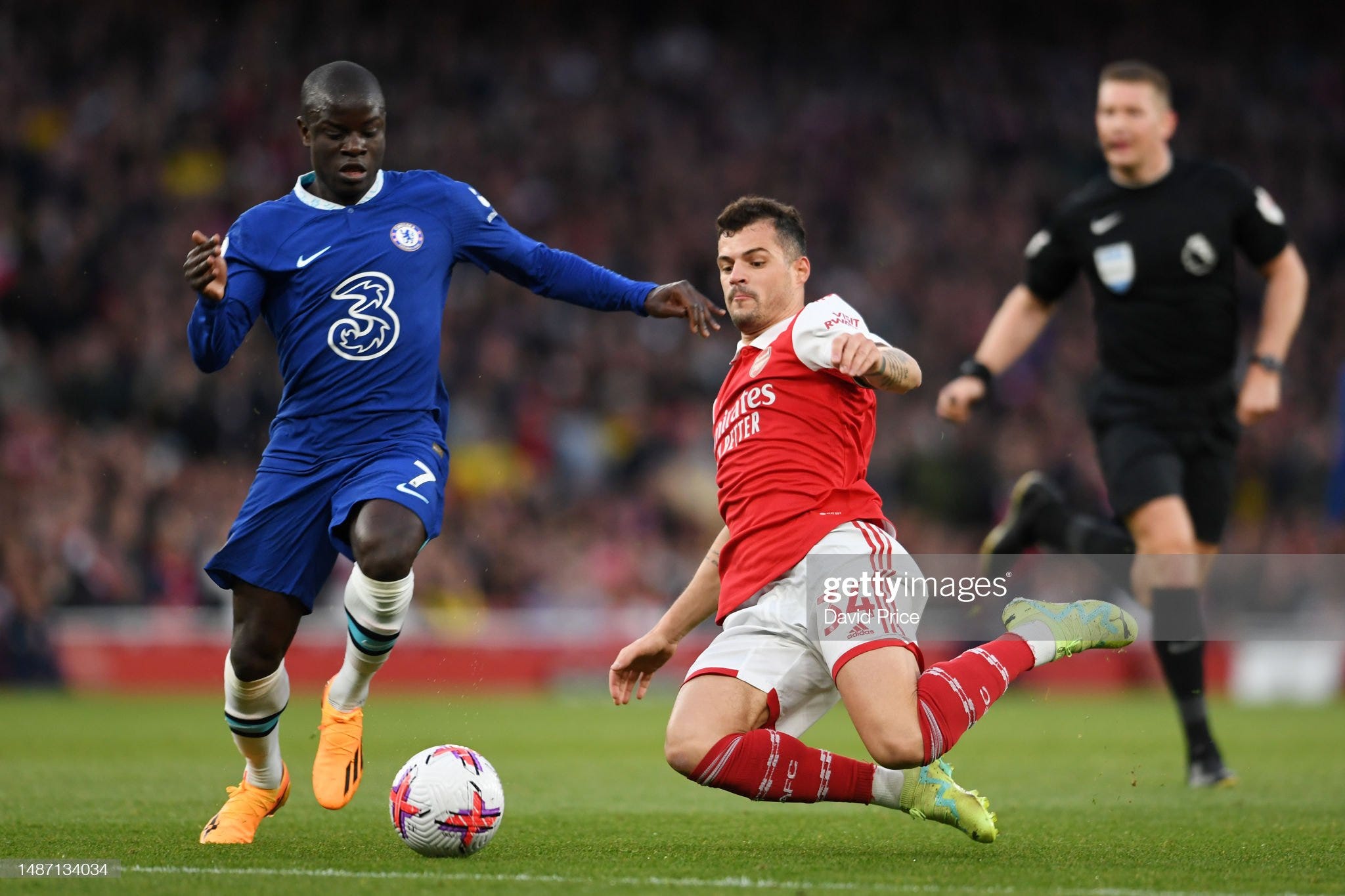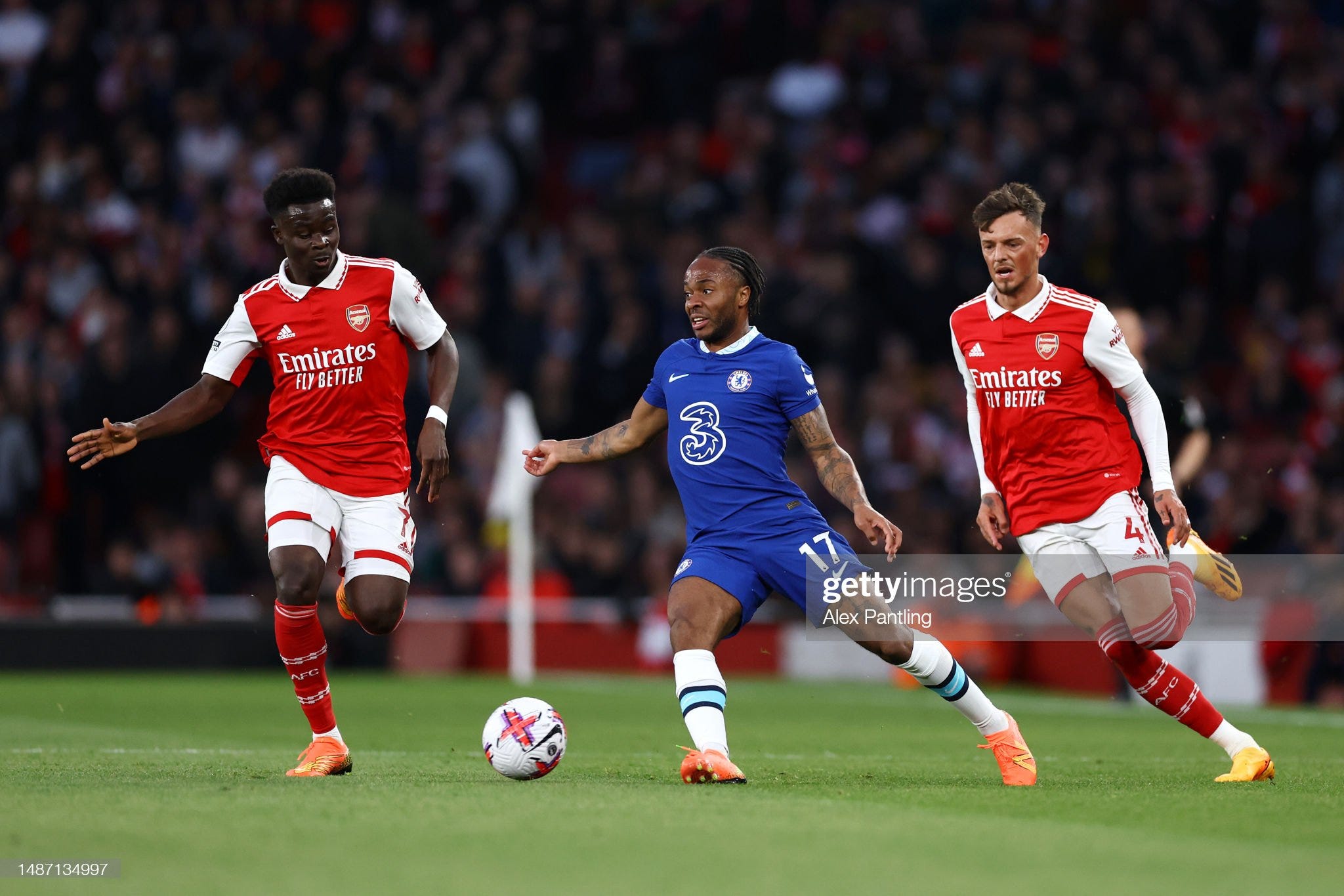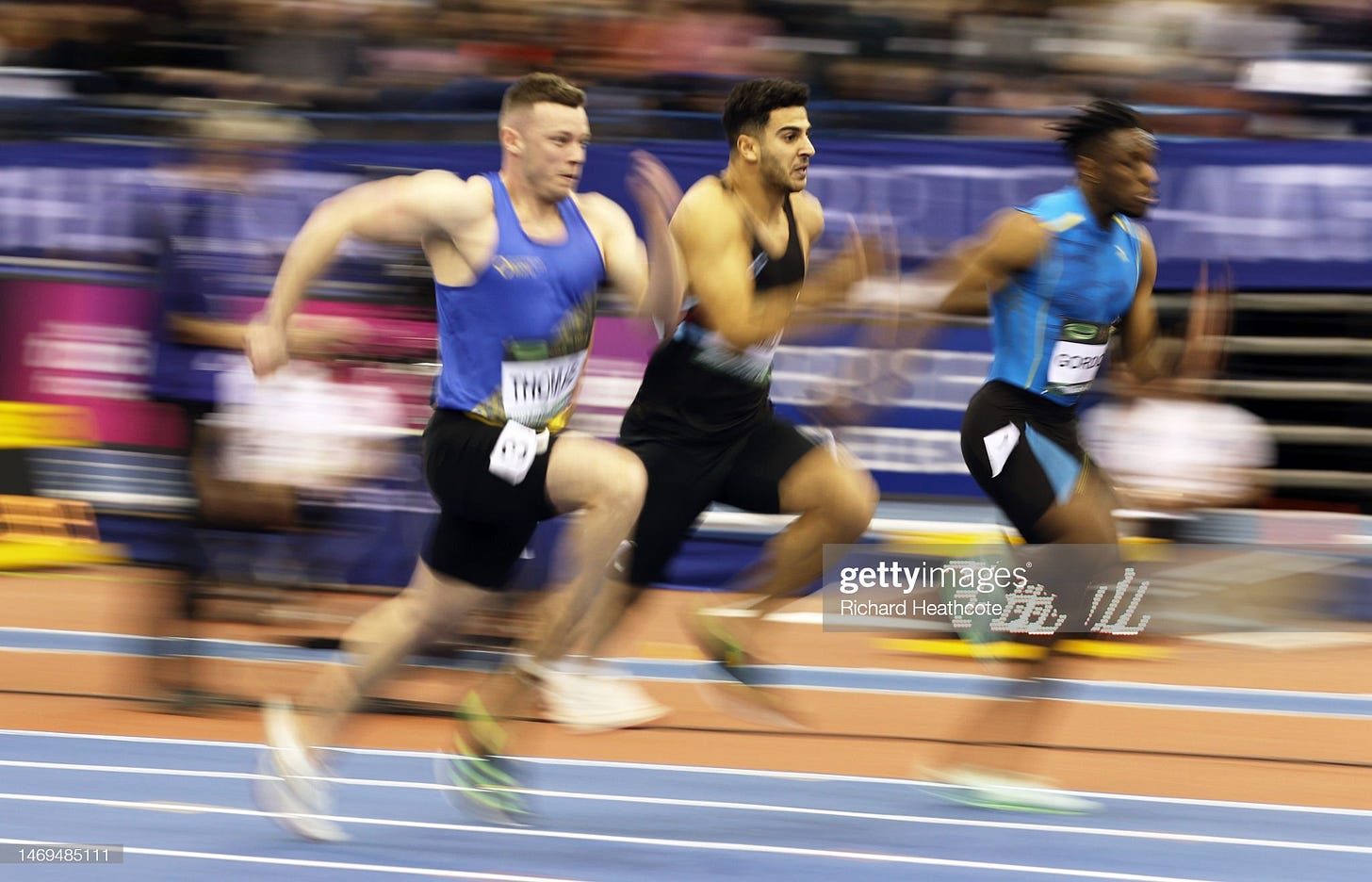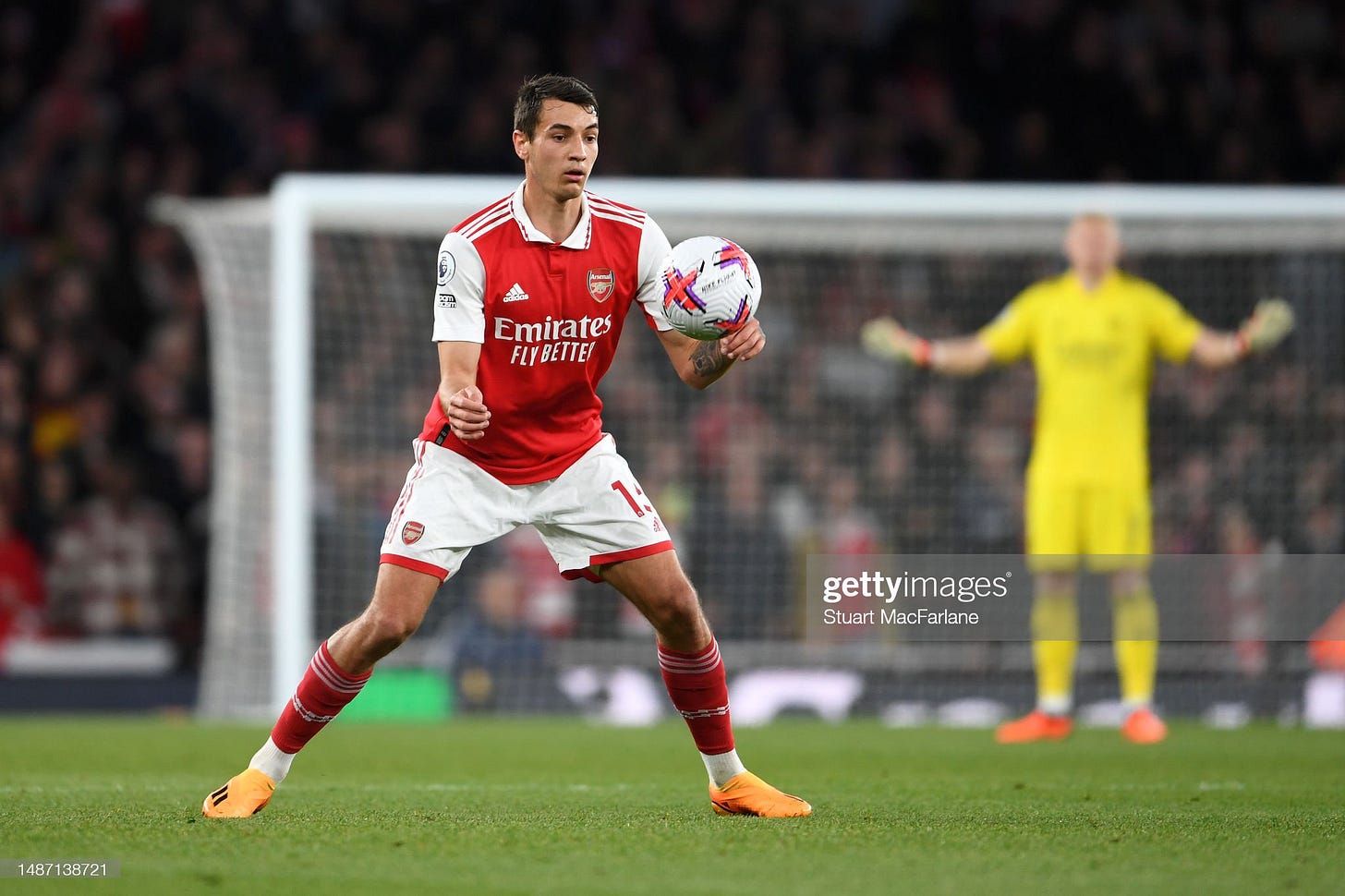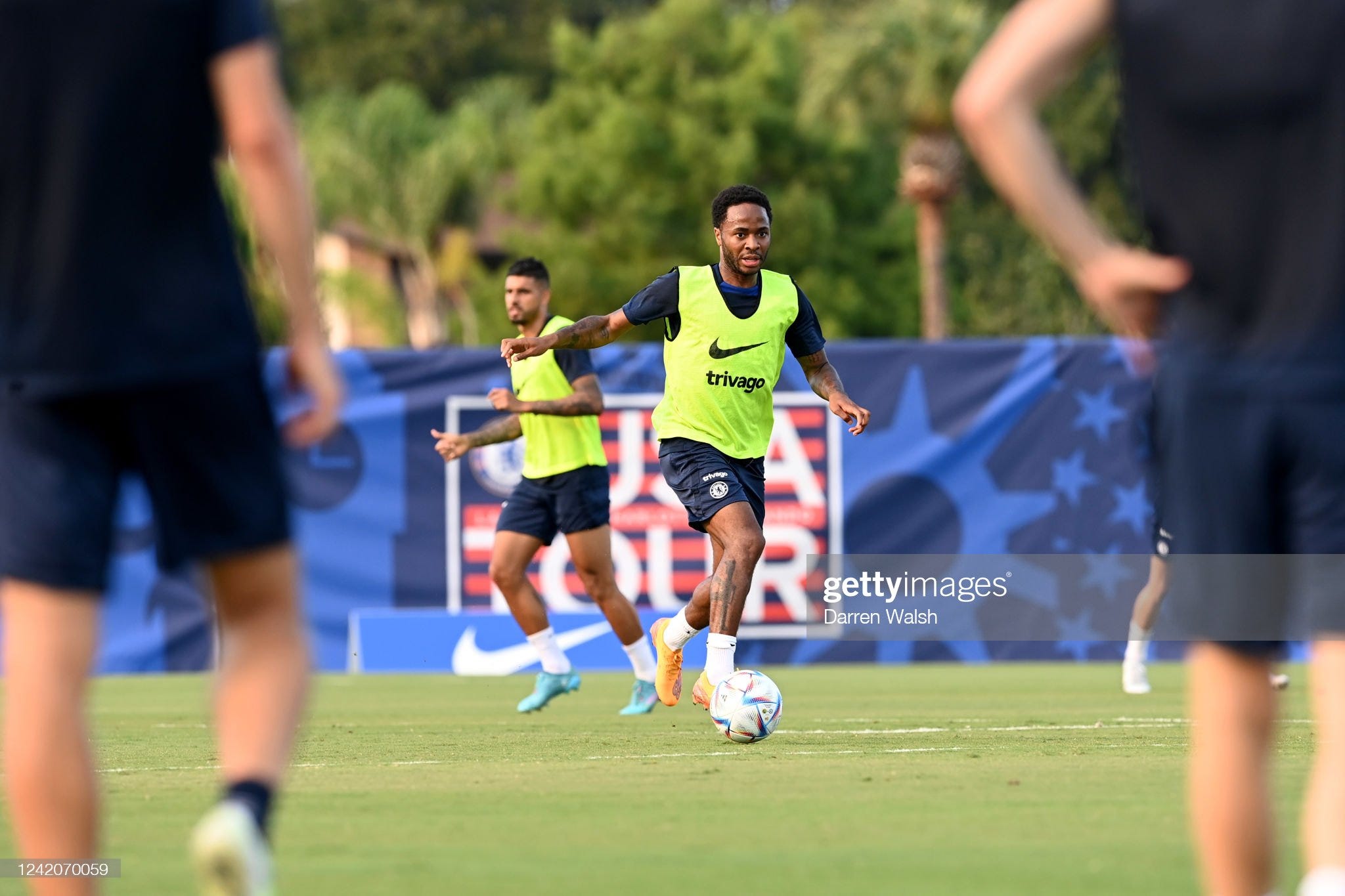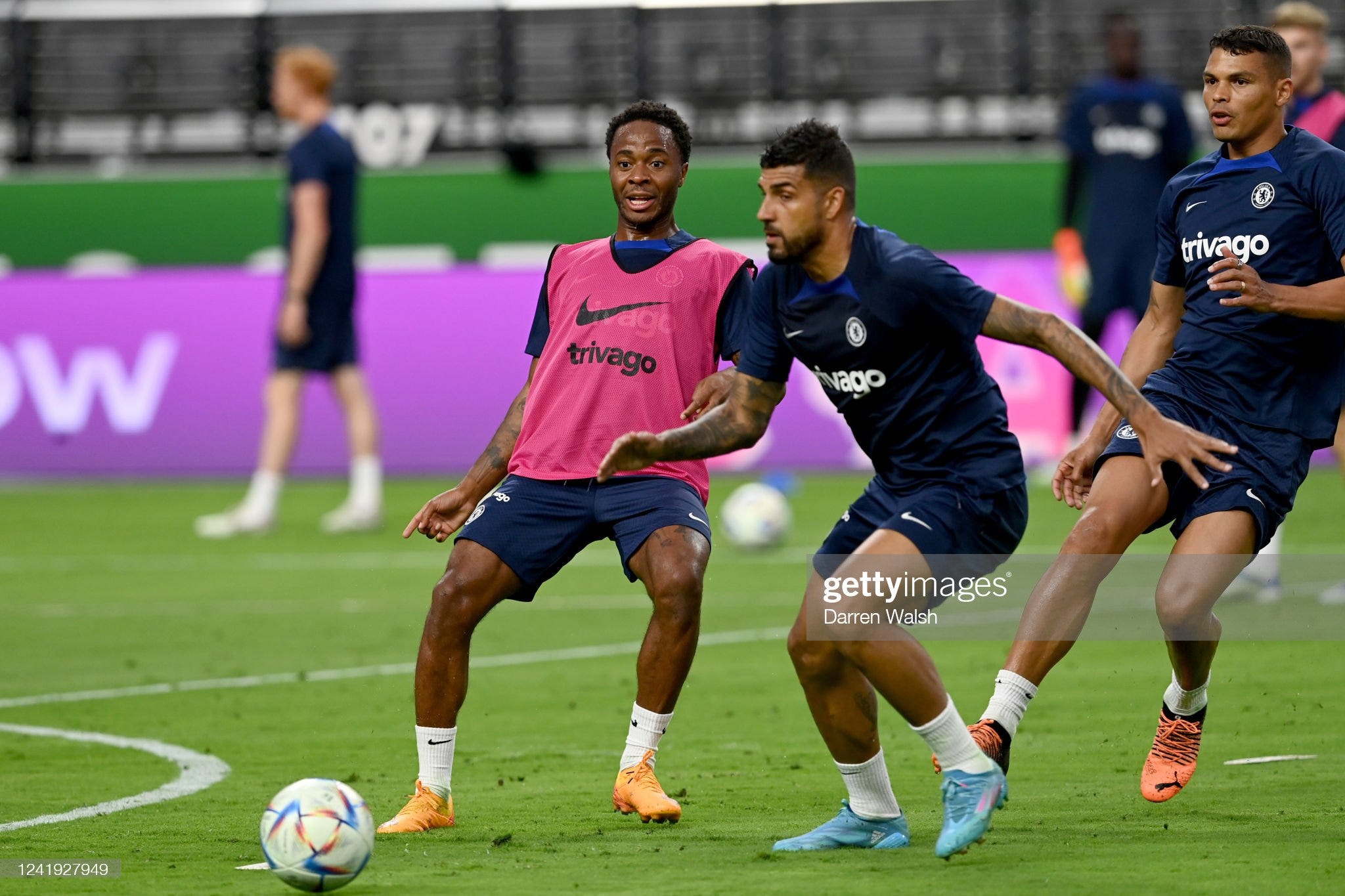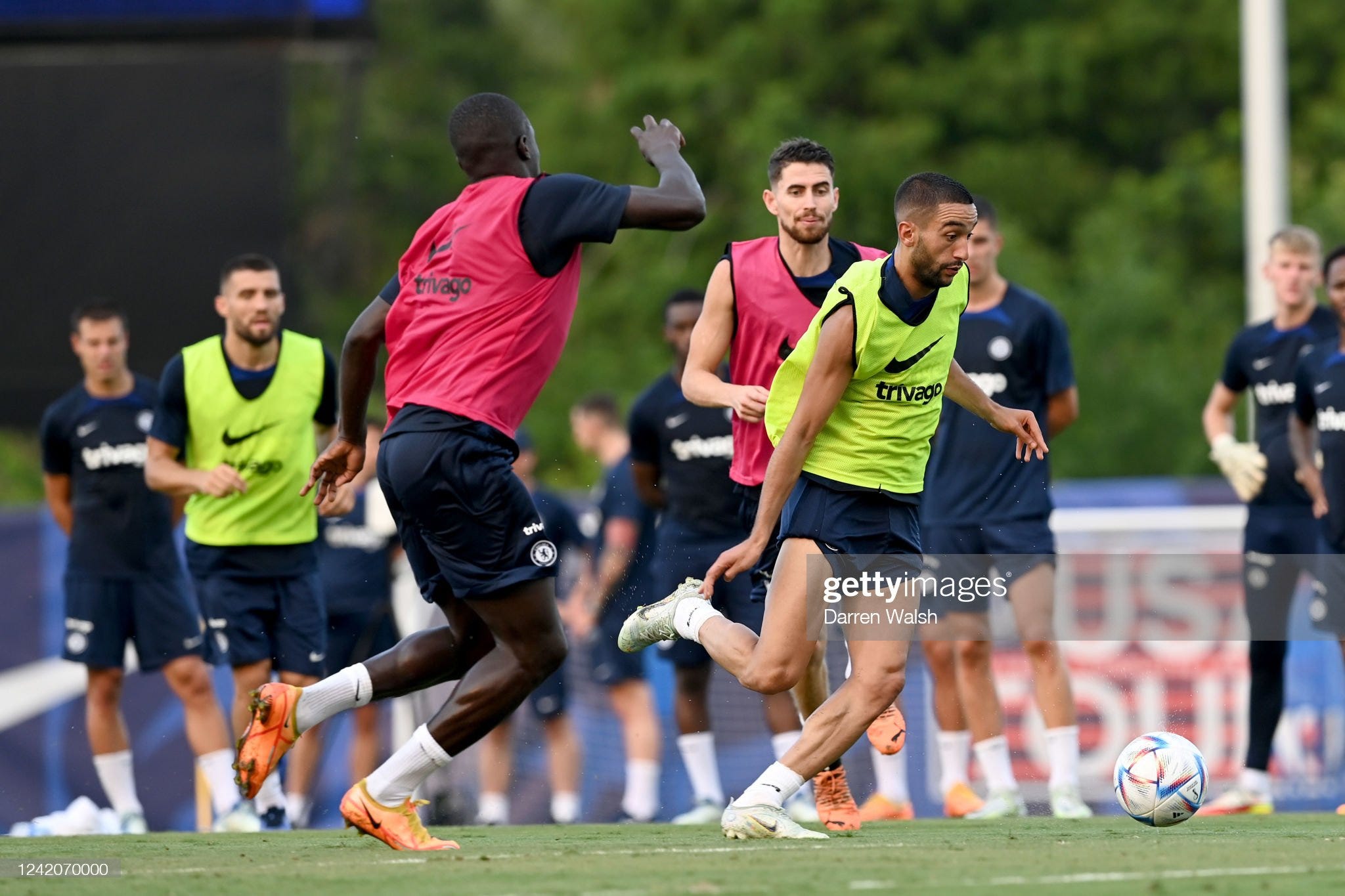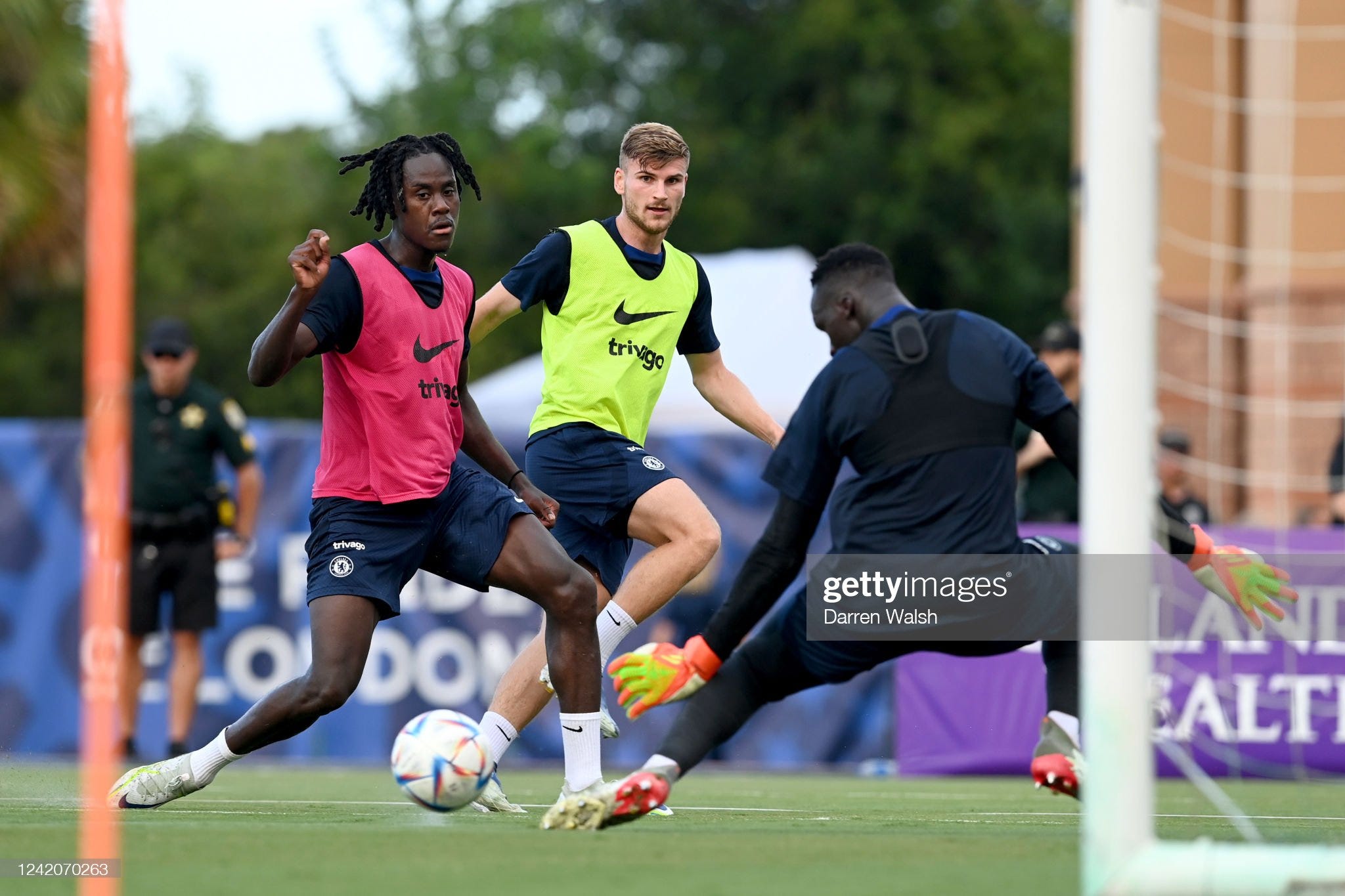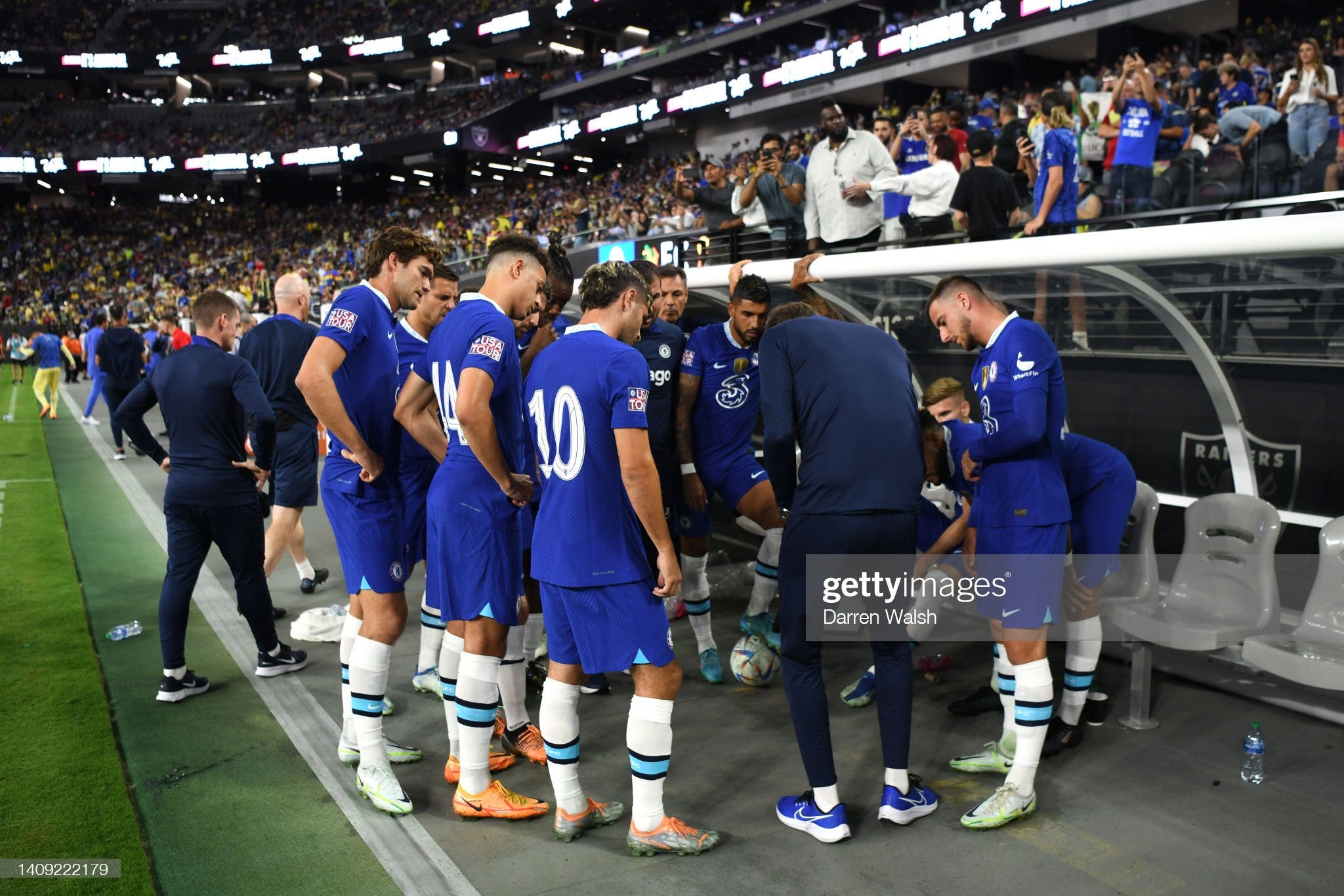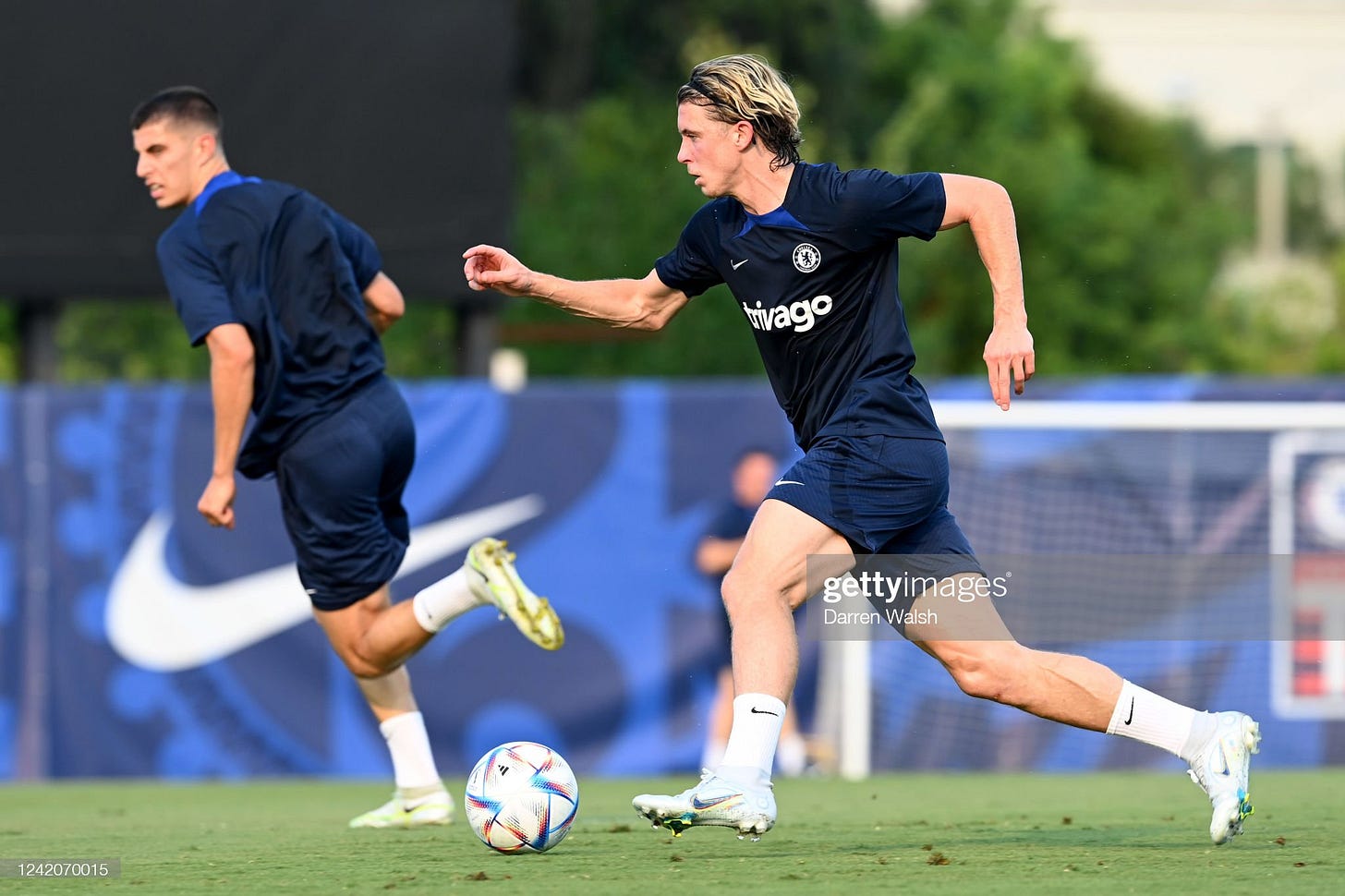… And I ran, I ran so far away
I just ran, I ran all night and day
I couldn't get away
*THAT* counter attack
Chelsea had a 4v2 at one point in the second half against Arsenal, which resulted into a lucky bounce somehow ending up in Noni’s path. Could it have been handled better? That’s a rhetoricallumhudsonodoi question.
How then?
The ball filters through Arsenal’s gegenwhatever, a flock of seagulls.
(this is unwanted 1980’s Pop pie in the face, here’s me hoping it’ll ring in your head all day)
Kanté: … And I ran, I ran so far away
Kanté gets on the ball and he’s usually quite good at carrying the ball up the field (he’s much better than a regista).
I couldn’t get away: Not Havertz, who does
That’s a textbok 4v2. Trained through wave practice: 3v2 becomes 4v3 etc… there’s no “circuit” involved here, being successful in these situations answer to the universal dynamic of the game:
Ball carrier draws to a CB to prepare
Diagonal carry for a staight pass
Straight carry for a diagonal pass
Straight / straight for a Timo Werner “how come I’m offside” fastbreak
Players need to get away from the ball carrier, shouldn’t be counterintuitive
Someone has to overlap the ball carrier to create a split second where defenders don’t know who to pick.
Havertz does what’s expected from one of the players involved, crosses Kanté’s path without interfering to try to drag Kiwior and stretch the CBs
You're slowly disappearing from my view: erm… unfortunately not Noni Madueke
Madueke points at Kanté to feed Sterling, but that might not be the optimal thing to do (akin to relying on the YouTube algorithm slippery slope for musical suggestions).
Kanté probably should chose an angle to drive (usually go at a CB, the nearest one) so that the masked pass still goes toward goal (diagonal carry, straight pass), instead of any option he’d chose that’d necessarly be angled and towards either corner flag
Point is is to define (by clear movement to find separation or decoy) one player out of Sterling or Madueke that becomes the “open” player (the “affordance” to talk science) based on what Odegaard does.
Decision making is based on what the environment affords x what choice Kanté can afford based on his skill and perception (analytical , unopposed training against plastic mannequins raining offers very little ground to help players make better decisions)
Madueke is the one who jams the counter the most, because he doesn’t evade Kanté’s path to create a decoy and even ends up disrupting his field of vision.
'Pearing from my view: Kanté can’t see/connect with Sterling
At that point, Kiwior manages the “crisis situation” quite well, by “floating” between Havertz and the obvious route between the two that Kanté could take. Meaning that both options are possible but not great because Kiwior can intervene.
Chemistry on counter attacks needs players who’re able to make decisions based on what the other player does, because they perceive it (good players are good) or are used to a preferential service the other fancies. (Sterling wants into feet, then I go beyond)
Sterling *could* have made a D (without the baton) run so that Odegard has a choice to make:
Stretch and go wide to track the run: the middle is open, and Sterling is quicker so he’s done if Kanté splits the CBs
Stay in position but in which case Sterling would have time to receive and attack Odegaard DiAgOnAlLy (see the Noni Maduewsletter).
Sterling’s good, he’s been Chelsea’s best attacker (and most criticised) this season.
He can both run beyond defences and dribble if fed into feet.
because speaking of baton, frankly, that counter looks more like a relay race than football. Anyone to enquire if Adam Gemili still has football boots at home and could do a job at Chelsea upfront? Knows the place (and has pace)
What Noni really should have done here would be to overlap Sterling (considering Sterling runs in direct line. Then the split second where Odegaard doesn’t know which of the 3 (Kanté to shoot, Sterling or Madueke) to track would be enough to create a chance out of it
I'm floating in a beam of light with you: Kiwior’s good defensive management
Kanté can’t play Sterling (nor reasonably Madueke here)
Kiwior, as mentioned, does a good job floating in the middle of the V (being the scope of Kanté’s options: Havertz or go himself (or slide it to Noni)
Aurora borealis comes in view: at least not the game anymore for a split second for Madueke
What makes top attackers what they are, is how alert they are especially in the box.
Failure in sport is not trying, and if you try and miss; it’s the propensity to go again immediately after that sets the ones from the pretenders (to stay in the same dodgy Vinyl store)
It’s right to be disappointed, but opportunities come and go, sometimes unexpected (like a phone call in January to sign a 8 year contrat or so at Chelsea FC).
With auburn hair and tawny eyes: but Ben White doesn’t watch football so whatever
Because Ben White doesn’t watch football (or for some other reason), he takes a nap and keeps Madueke onside when Gabriel knees the ball back into play. 50 million miles behind everyone else.
What Madueke does is reminiscent of what Fernando Torres did in 2013 to score the opening goal against Benfica (Chelsea being the official SL Benfica heart-breaker).
Stand his ground whilst the goalkeeper precisely goes to (ground) to have an open angle at goal. The composure to think quick at that moment is good
Shooting at that point is going to get blocked by Ramsdale.
Madueke delays the shot, to have an open goal
Kai, you’re not a 9, m8. If you were, you’d be Demba Ba-ing, lunging into a forest of legs in the six yard box. Even coming short. At least make Arsenal defenders feel something’s coming.
Echoing the pass Madueke passes after his mazy run (on a rail) earlier in the game, bit of ruthlessness to try to roof it off balance would have been a better option than the charity pass across the face of goal.
That was a hard thing to do though so that’s it
Sometimes hitting it very hard can do the job (or it could also hit the post and rebound on his bandana)
How to coach it?
The best way to improve players on fastbreak situations is via wave practices.
By improving, we mean helping them figure out what works, decide it in real time and execute it.
The point is to repeat actions at a high frequence (3v2 becomes 4v3, meaning the 3 who attacked become defenders because 2 players join the party alongside the 2 who were defending). There’s a lot of variations, 1v2 3v2, 3v2, 4v3 etc… ideally you want players to get involved in two consecutive sequences before making way, so that they’re forced to stay switched on for the immediate transition
This is a wave practice Tuchel delivered the day before playing Club America.
Due to the training occuring the day before the game, the distances are small and the corners are cut.
Small depth means little speed involved (the body needs 24-48h to recover), and litle strength by relying too much on ball retention in the corners (same, that need a bit more time for the body to recover). Clever practice design, but also common.
These are the key coching points both for the team in and out of possession. In chronological order from the video
IN ATTACK:
COMMIT two players, so that other options become free left and right of them
STRAIGHT-DIAGONAL, and DIAGONAL-STRAIGHT: choice needs to be made (ideally the latter) to cause a problem and create a playable angle. There’s no way straight-straight works, or it’s just an offside situation (or 110m without hurdles)
OVERLAP: the timing of the overlap is to go beyond the carrier when he’s able to pass it (not too soon, not too late). Emerson’s timing is perfect (but anything without the ball he’s good at).
COMMIT 1v1: Havertz’s ball mastery is immaculate: control with the back foot, drive diagonally, second touch to drive it with his left is clean and close to the feet. The stepovers are meant to bamboozle (great word) the defender and also wait for Emerson to be just in time for the commute junction
JAM THE DEFENDER’S FOOTWORK: any attacker’s aim is to have more touches and more steps than the defender does. At one point the defender is delayed like soundtrack on video streaming (most annoying thing in the world), and will try to skip the queue and get back on track. Usually has two flat foot steps, or tangles his own legs. Or loses his balance. Sterling is one dyanmic player
DEFENSIVELY
SHOW PEOPLE WIDE: Welcome to fabulous chance to score. This is pretty straigtforward, don’t open your body inside. Unless the player can’t shoot, and options out wide are more dangerous. Say Felix drives with the ball, let him shoot, it’ll be straight at the GK plain middle. Ziyech (or Lampard) well maybe don’t do that
SKIP AND BACKTRACK: Barkley does excellent here, to adjust his footwork not to open up the space between him and his team mate. More on how defensive footwork, based on Trevoh Chalobah’s solid performance against Mitoma last month. Don’t @ me
DOUBLE TEAM: it’s simple: deepest runner picks up the most advanced runner. Kenedy must pick Havertz (that’s the double team) whilst Chilwell takes care of the runner that is Emerson
FINISHING
GIANT STEPS: don’t do that, accurate skipping allows to set the pivot foot (the one that doesn’t shoot), alongside the ball for maximum accuracy. Toes pointing where the shot goes. Werner shoots like a U14 who figures out he can shoot hard, but yeah sure he’s unlucky from an expected goals perspective.
SHOULDERS ABOVE THE BALL: Hit hard without the shot flying over, is possible if the shoulders are above the ball. Which is what Michy does.
NOW ONTO THE GAME?
These are specific cherrypicked examples from the game the next day, in relation to the session from the day before.
Let it be clear, the session the day before is what top level teams do, that’s not too demanding in terms of intensity / information for top level professionals.
They don’t “train” specific stuff, they rehearse general-ish football behaviours in a practice-opportunity to do so.
Lower down the thirds in football, this practice could easily be a core midweek practice for the intensity and information load it is about.
Session plan
Bigger practice
Tuchel delivered a bigger practice in pre-season, with more space to run into.
And more opportunities to put emphasis on the overlaps, cross runs to drag players away. On transition, players are meant to find the target 9 for a lay-off then start the break.
This practice can be used to work on power and even speed.
Access it via the picture (and the link of the YouTube diffusion that Substack doesn’t embed), it starts at 1h02.
List of interesting things to look at:
How the ball carrier commits defenders,
Do they drive straight or diagonally, what is the final pass like? straight or diagonal
hide his intent to play masked passes,
how potential receivers create decoys
how actual receivers manage their two or three touches before finishes
do finishers take accunt of the GK’s behaviour: goes to ground, covers the angle, stays on his feet
Is the 9 turning or laying off under pressure
and of course, do defenders adopt reasonably decent defensive postures to deal with what are “crisis situations”. Look at body angles (shoulders), footwork (on toes), change of direction, closing down during the pass or before/after

If you’re interested to look at the things mentioned in this newsletter, this is kind of my objective
Trying to bridge the gap between analysis and coaching. There’s no gap, just two environments that tend to act as echo (Callum) chambers on their own.
And that way, provide accessible insight but moreoever present as much the framework of things to look at than actual examples for the reader to “exert his eye”.
The first step of expertise is to know what to look at, experts have the same picture but their mind is only drawn to what matters (and there’s sufficient benchmark/examples to compare).
For what it’s worth, and all the grand discourses about playing philosophies, players at all levels and age groups are usually dreadful at handling the simplest of 3v2 counter attacks. That quick, witty and ruthless attackers love to overhit a pass to the corner flag to be sure they’re the one getting the return pass in the middle is one thing (this is a thing).
But how often players release early, drive on a railktrack, look where they pass etc… even at professional level is mind boggling.
The more they train in these end to end situations, to exert a level of control on the chaos, the better they’re going to become.
Train, get better granted the feedback is remotely half decent. Players will like you because they feel like improving.
Talk shite and show animated dots on a powerpoint slideshow; end up throwing tantrums on the touchline. Players will hate you becase it’s always their fault









